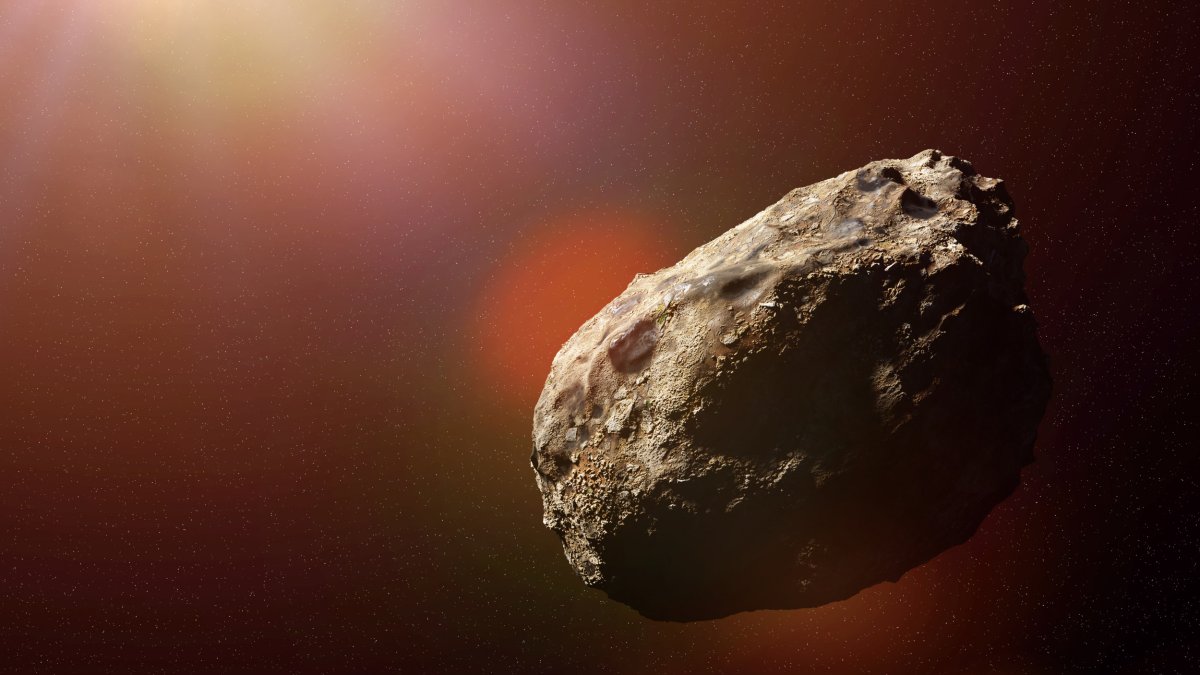A gigantic asteroid that could be larger than the world's tallest building will zoom safely past our planet this week, according to NASA.
Data from the space agency's Center for Near Earth Object Studies (CNEOS) shows that the enormous object—known as 162082 (1998 HL1)—will make its closest approach to our planet on Friday, October 25 at 1:21 p.m. EDT.
At this point, the space rock will be around 0.04155 astronomical units, or 3,862,313 miles, from Earth—roughly equivalent to 16 times the distance between the Earth and the moon. While this may seem very far away, in terms of our solar system it is actually relatively close—although there is no chance that 1998 HL1 will collide with our planet.
As the asteroid flies past, it will be travelling at a staggering speed of around 25,000 miles per hour—which is about 12 times as fast as a bullet that has been shot out of a rifle.
1998 HL1 is estimated to measure between 1,443 and 3,248 feet in diameter. This means—going by the maximum estimate—that the space rock would be comfortably taller than the Burj Khalifa tower in Dubai if it was placed next to the building. The Burj is the world's tallest structure measuring around 2,700 feet in height.
The asteroid last made a close approach to Earth in June this year. However, it will not do so again until October 2026, according to data from NASA's Jet Propulsion Laboratory.
1998 HL1 is a near-Earth object (NEO)—any comet or asteroid whose orbit around the sun brings it within 121 million miles of the star and 30 million miles of our planet.
Even though 1998 HL1 is not on course to strike Earth in any of its upcoming close approaches over the next couple of centuries, it is classified as "potentially hazardous." This term refers to any NEO which is predicted to come within 0.05 astronomical units (4,647,790 miles) of Earth at some point and is thought to measure more than 460 feet in diameter based on the observed magnitude.
Currently, we know about more than 20,000 NEOs and more are being discovered at a rate of 30 per week—the vast majority of which are asteroids.
Among this 20,000 that we know of, around 5,000 are classed as potentially hazardous, although scientists are not aware of any that have a significant chance of striking Earth in the next century or two at the least.
This is fortunate because if an asteroid the size of 1998 HL1 did strike the Earth, the impact would cause regional devastation, and potentially even affecting the global climate. Collisions involving objects of this size are very rare, although they have occurred in Earth's past.

While scientists aren't currently aware of any major, imminent threat, space agencies are still preparing for all outcomes. This is especially pertinent given that around two-thirds of the objects larger than around 460 feet in diameter that exist in the solar system are yet to be discovered, according to NASA estimates.
"Earth is covered by past asteroid impact craters," Ian Carnelli from the European Space Agency (ESA) previously told Newsweek. "Currently no asteroid poses a threat but one day it will happen again. The major risk is posed by 150-meter-class objects, we know very few of them and there are potentially hundreds of thousands somewhat close to Earth."
Carnelli is part of an ESA team which is working on an ambitious mission—in collaboration with NASA—to deflect an asteroid in space. The aim is to test whether such a technique could be used to protect our planet if a potentially hazardous NEO was on course to strike the Earth in future.
Uncommon Knowledge
Newsweek is committed to challenging conventional wisdom and finding connections in the search for common ground.
Newsweek is committed to challenging conventional wisdom and finding connections in the search for common ground.
About the writer
Aristos is a Newsweek science reporter with the London, U.K., bureau. He reports on science and health topics, including; animal, ... Read more
To read how Newsweek uses AI as a newsroom tool, Click here.








